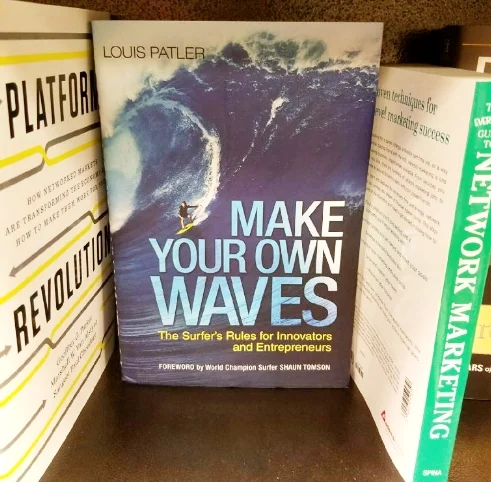A few nights ago, I had the pleasure of doing a talk and book signing to promote my new book Make Your Own Waves: The Surfer’s Rules for Innovators and Entrepreneurs (http://www.louispatler.com/books/ ). The host of the event introduced using a few remarks drawn from his own Google search of my background and experience. I have three decades of consulting, five books and over 100 articles and an extensive bio, I.e. there is a lot to choose from.
Out of all the possible things he could have said about me he closed his comments with a quote from one of my early blogs:
““And Louis believes that innovation is everybody’s everyday job.””
I came to this conclusion after years and years of work in the innovation world, a world filled with companies and clients who brought me in to help them develop “a culture of innovation.” Over and over I met with top leadership and helped them craft a plan to make a culture of innovation a reality, and over and over again the results, by my standards, were a step in the right direction but generally “underwhelming.”
One day, while working with a team of engineers who certainly didn’t think of themselves as innovators, I offered to run a couple of my workshops to give them some further skills and tools useful to the innovation process. To my surprise they jumped at the offer and months later, with more tools and skills at their disposal, their productivity and creativity grew exponentially.
It was at that moment that I made a distinction in my own mind between an abstract goal of creating a “culture of innovation,” and the reality I had just witnessed of a “company of innovators.” To simply state the obvious: innovators make innovations.
A recent interview about design thinking with my friend George Kembell, co-founder of Stanford University’s “d.school” speaks to the same revelation that I had about the power of democratizing innovation. ( Article Here )
“Somehow, I think, culturally, we’ve over-associated creativity with the arts,” he says. “As a leader you want everyone to be innovating, in terms of their creative capacity, not just one department, not just the product group. You want innovation in finance, innovating in marketing, innovating in product development, innovating in supply chain, innovating in hiring and all that stuff.”
Innovation is not restricted to the chosen few, the “gifted” or the “artsy.” To truly create a culture of innovation the key is to start by training a company of innovators. If you do the latter properly, the former follows automatically.


